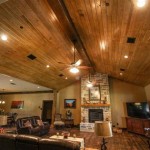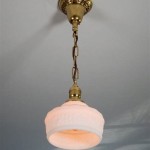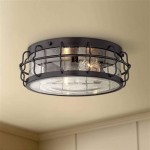Why Do Old Houses Have Low Ceilings?
Stepping into an older home, one of the first things you might notice is the lower ceiling height compared to modern houses. While today, we associate high ceilings with spaciousness and luxury, older homes often feature cozy, low-ceilinged rooms. This seemingly simple design feature holds a fascinating history and practical reasons that reflect the needs and priorities of bygone eras. Understanding these motivations helps us appreciate the nuances of architectural evolution and the stories these structures hold.
Limited Materials and Skilled Labor
During the 17th, 18th, and even early 19th centuries, building materials and skilled labor were scarce and expensive. Timber, essential for framing and roofing, was often locally sourced and limited in size. This constrained ceiling heights, as using taller beams would have required more material and therefore, greater cost. In addition, skilled carpenters were in high demand. Their labor was costly, and intricate ceiling designs, demanding more specialized skills, were simply impractical. Low ceilings, requiring less timber and easier construction, were a cost-effective way to build homes. This practicality extended to heating and insulation. Lower ceilings needed less heat to maintain a comfortable temperature, reducing fuel costs and energy consumption.
Living Styles and Social Norms
Architectural styles and interior design trends reflect the social and cultural values of their time. Low ceilings were not just a matter of practicality but also a reflection of living styles in earlier centuries. Homes were designed for more intimate spaces with less emphasis on grand, open layouts. People lived in these smaller, cozier spaces that lacked the need for high ceilings. The focus was on functional comfort and a sense of warmth within the family unit. Social norms also dictated the layout of homes. Living rooms were often smaller, serving primarily as spaces for family gatherings and quiet activities. This emphasis on intimate spaces, reflected in lower ceilings, contributed to a different sense of home life compared to the open, expansive living spaces favored today.
Changing Needs and Architectural Evolution
As building materials became more readily available, construction techniques advanced, and living styles evolved, the desire for taller ceilings grew. By the late 19th century, the Industrial Revolution and technological advancements brought about a shift in building practices. Mass production of materials, like standardized lumber and metal framing, lowered costs and allowed for greater flexibility in design. Technological innovations like the steam engine and electric power facilitated the use of materials like concrete and steel, making taller buildings possible. This evolution from the intimate, low-ceilinged homes of the past to the grander, open spaces of modern architecture reflects the changing needs and aspirations of society.
The Enduring Appeal of Low Ceilings
Although high ceilings are often associated with luxury and spaciousness in contemporary design, the charm of low ceilings in older homes remains enduring. The cozy atmosphere created by lower ceilings can foster a sense of intimacy and warmth. The smaller scale of rooms can also have a positive impact on acoustics, creating a more intimate ambiance for conversations and music. These qualities are often sought after in modern homes, especially in areas like bedrooms and dining rooms, where creating a relaxed and inviting atmosphere is desired. Many contemporary homeowners appreciate the character and charm of older homes, leading to the preservation and even incorporation of low ceilings in modern renovations.
The low ceilings of older houses are not simply a relic of the past but a fascinating window into the history of construction, social norms, and architectural evolution. They represent a time when practicality and intimacy were highly valued, and their enduring appeal speaks to the enduring human need for cozy and comfortable spaces.

Low Ceilings Old Home No Problem On The Drawing Board

The Househunter Low Ceilings And Awkward Shapes Mad About House

The Househunter Low Ceilings And Awkward Shapes Mad About House
Why Are House Ceilings So Low In England Quora
Why Are House Ceilings So Low In England Quora
Why Do They Make Low Ceiling Houses Quora

The Househunter Low Ceilings And Awkward Shapes Mad About House

The Househunter Low Ceilings And Awkward Shapes Mad About House

The Dining Room Ceiling Oops Daniel Kanter

The Househunter Low Ceilings And Awkward Shapes Mad About House
Related Posts








